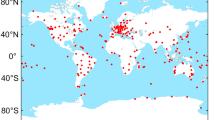Abstract
The Weighted Subspace Fitting (WSF) algorithm is one of the universal algorithms in Direction-Of-Arrival (DOA) estimation, which is of high accuracy. However, it involves the multi-dimensional nonlinear optimization problem, and the computational complexity is usually high. In this paper, we propose a low-complexity DOA estimation algorithm based on constraint solution space. Firstly, we use ESPRIT algorithm to limit the solution space around the best solution and reduce the computational range. Then, we find the best solution in a smaller solution space constraint by Cramr-Rao Bound (CRB), and seek repeatedly until reaching the global optimal solution of WSF algorithm by using the space of the best solution. By limiting the searching process in smaller solution space, this strategy controls the direction of convergence and reduces computational complexity. The experimental results show that this algorithm needs less iterations when the same DOA accuracy is required, and the computational complexity is apparently reduced.




Similar content being viewed by others
References
Werner, J., Wang, J., Hakkarainen, A., Gulati, N., Patron, D., Pfeil, D., et al. (2015). Sectorized antenna-based DoA estimation and localization: Advanced algorithms and measurements. IEEE Journal on Selected Areas in Communications, 33(11), 2272.
Wang, T., Ai, B., He, R., & Zhong, Z. (2015). Two-dimension direction-of-arrival estimation for massive MIMO systems. IEEE Access, 3, 2122.
Li, Y., Gu, S., & Zheng, N. (2016). MIMO radar transmit beampattern design for DOA estimation with sidelobe suppression. International Journal of Antennas and Propagation, 2016, 1.
Shayesteh, M. G. (2014). Blind wideband spectrum sensing in cognitive radio networks based on DOA estimation model. Iet Communications., 8, 3271–3279.
Nielsen, U., & Dall, J. (2015). Direction-of-arrival estimation for radar ICE sounding surface clutter suppression. IEEE Transactions on Geoscience and Remote Sensing, 53(9), 5170.
Roy, R., & Kailath, T. (2002). ESPRIT-estimation of signal parameters via rotational invariance techniques. IEEE Transactions on Acoustics Speech and Signal Processing, 37(7), 984.
Sun, F., Gao, B., Chen, L., & Lan, P. (2016). A low-complexity ESPRIT-based DOA estimation method for co-prime linear arrays. Sensors, 16(9), 1367.
Schmidt, R. O. (1986). Multiple emitter location and signal parameter estimation. IEEE Transactions on Antennas and Propagation, 34(3), 276.
Liu, G., Chen, H., Sun, X., & Qiu, R. C. (2016). Modified MUSIC algorithm for DOA estimation with Nyström approximation. IEEE Sensors Journal, 16(12), 4673.
Williams, R. T., Prasad, S., Mahalanabis, A. K., & Sibul, L. H. (1988). An improved spatial smoothing technique for bearing estimation in a multipath environment. IEEE Transactions on Acoustics Speech and Signal Processing, 36(4), 425.
Gao, S. W., & Bao, Z. (1987). Data-based matrix decomposition technique for high-resolution array processing of coherent signals. Electronics Letters, 23(12), 643.
Viberg, M., Ottersten, B., & Kailath, T. (2012). Detection and estimation in sensor arrays using weighted subspace fitting. IEEE Transactions on Signal Processing, 39(11), 2436.
Wax, M. (1991). Detection and localization of multiple sources via the stochastic signals model. IEEE Transactions on Signal Processing, 39(11), 2450.
Lei, H. (2005). Signal subspace fitting based on the multi-stage wiener filter. Journal of Electronics and Information Technology, 27, 1197–1200.
Zhao, C. H., & Fu-Chang, L. I. (2004). Wide-band weighted sub-space fitting direction finding algorithm based on genetic algorithm. Acta Electronica Sinica, 32(9), 1487.
Jiao, Y. M. (2011). Continuous Ant Colony optimization based weighted subspace fitting fast algorithm for DOA estimation with few snapshots. Journal of Electronics and Information Technology, 33(4), 972.
Zhang, Z., Lin, J., & Shi, Y. (2013). Joint angle-frequency estimation based on WSF using Artificial Bee Colony algorithm. International Conference on Information Science and Technology, 3, 1312–1315.
Wang, J., Zhao, Y., & Wang, Z. (2008). Low complexity subspace fitting method for wideband signal location, In IFIP international conference on wireless and optical communications, networks (pp. 1–4).
Diao, M., Yuan, X., Gao, H. Y., & Chen, J. (2009). New method of estimating direction-of-arrival of moving sources based on particle swarm algorithm. Systems Engineering and Electronics, 31(9), 2046.
Chang, J. C. (2012). DOA estimation for local scattered CDMA signals by particle swarm optimization. Sensors, 12(3), 3228.
Chen, H., Li, S., Liu, J., Liu, F., & Suzuki, M. (2016). A novel modification of PSO algorithm for SML estimation of DOA. Sensors, 16, 12.
Acknowledgements
This work is supported by the National Natural Science Foundation of China under Grant Nos. 61972417 and 61872385; The Fundamental Research Funds for the Central University, with Nos. 18CX02134A, 18CX02137A and 19CX05003A-4.
Author information
Authors and Affiliations
Corresponding author
Additional information
Publisher's Note
Springer Nature remains neutral with regard to jurisdictional claims in published maps and institutional affiliations.
Rights and permissions
About this article
Cite this article
Li, S., Sun, L., Chen, H. et al. Low-Complexity DOA Estimation Based on Constraint Solution Space. Wireless Pers Commun 111, 2435–2447 (2020). https://doi.org/10.1007/s11277-019-06994-8
Published:
Issue Date:
DOI: https://doi.org/10.1007/s11277-019-06994-8




